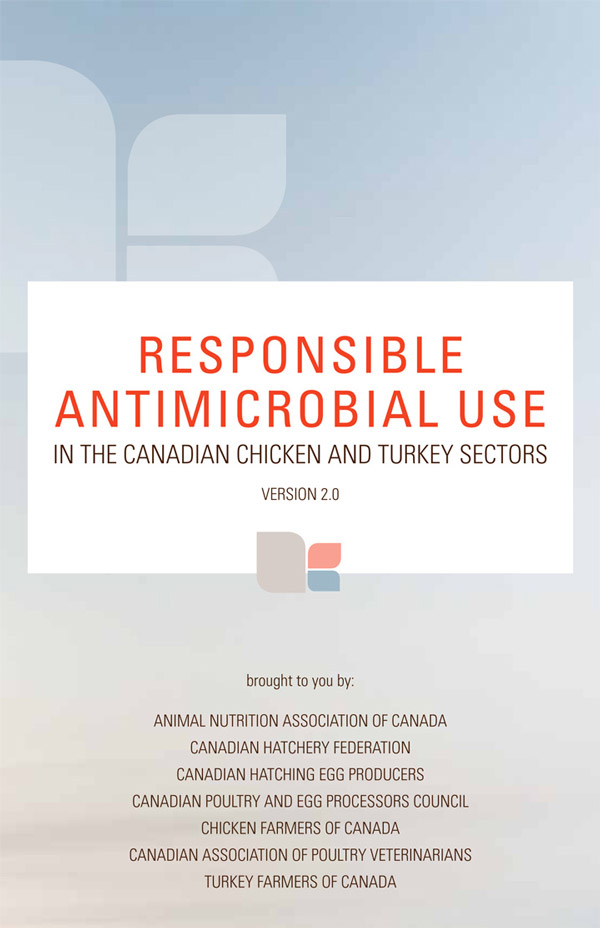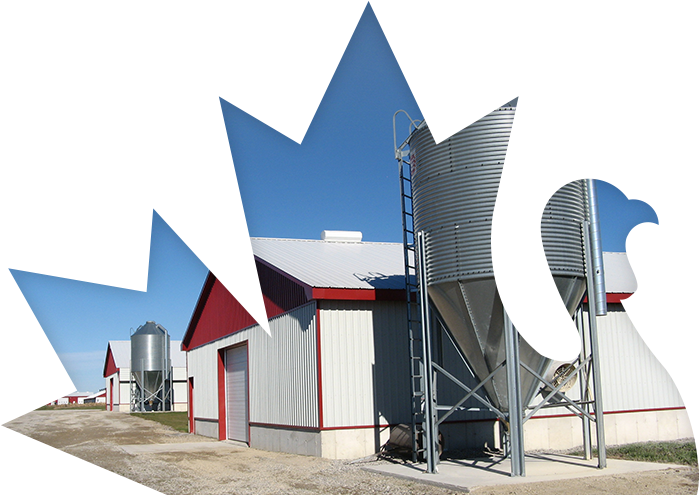Turkey farmers are responsible for the health and welfare of their birds and for providing safe, high quality food for consumers.
Turkeys are fed nutritionally balanced diets of mixed grains and oilseeds, which typically include corn, soya, wheat, barley and canola, for healthy growth and development. There may also be a small percentage (6 to 8 percent) of animal protein, such as meat and bone meal, in some turkey feeds, which helps to ensure that there is enough protein, calories, minerals and fat to meet a naturally omnivorous turkey’s nutritional requirements.
Feed is often adjusted to match the growth stages of the birds. Young turkeys (poults) are fed a “starter” mixture. As they grow, the feed is changed to meet nutritional requirements. Each type of feed includes the proper balance of protein, energy, fibre, fat and other elements such as calcium, phosphorus, magnesium and vitamins.
Turkeys have free access to feed 24 hours a day, which means they can help themselves to food or water at any time.
Antibiotics
There is significant veterinary oversight within the turkey industry, ensuring medications are used responsibly. Appropriate use of medication, including antimicrobials, is a critical requirement of the mandatory TFC On-Farm Food Safety Program© (OFFSP).
Antibiotics are ranked by Health Canada based on their importance in human medicine. There are four different levels based on the importance of the antibiotic to human medicine. These categories go from Category IV, low importance, which are not used in human medicine, to Category I, very high importance, which are essential to treat serious human infections. The majority of antimicrobials used in turkeys are not used in humans (around 63%).
If medication must be used, a strict withdrawal period is required before any bird can be marketed, ensuring there are no medication residues in the final product.
Antimicrobial Use (AMU) Strategy
The Canadian turkey industry has taken steps to ensure antibiotics are used responsibly in order to address concern surrounding antibiotic use and resistance with the goal of maintaining human and animal health, The Canadian poultry industry initiated a policy in 2014 to eliminate the preventive use of Category I antibiotics. To build on this proactive approach, the Canadian turkey industry has expanded the strategy to eliminate the preventive use of Category II antibiotics by the end of 2018, followed by Category III antibiotics by the end of 2019.
Antibiotics can be used to treat disease in a flock or to prevent them from getting sick. While the turkey industry strategy addresses the preventive use of antibiotics that are important to human medicine, treatment of sick birds will remain an option for turkey farmers.
Canadian turkey farmers implement the mandatory TFC On-Farm Food Safety Program© on their farms. Annual audits ensure that farmers are following the requirements, including the AMU Strategy. Additionally, flock sheets capture information on antibiotics that may have been used. Canadian Food Inspection Agency (CFIA) veterinarians verify flock sheets to make sure that antibiotics were used appropriately.
Turkey farmers work with the Canadian Integrated Program for Antimicrobial Resistance Surveillance (CIPARS) of the Public Health Agency of Canada to implement surveillance on-farm to monitor antimicrobial use and resistance, which helps to inform, guide, and monitor the AMU Strategy.
To have a better understanding of antimicrobial resistance and to ensure the successful reduction of AMU, the Canadian poultry industry and stakeholders have invested over $2.2 million in antibiotic alternative and antibiotic resistance research which has been leveraged to over $10.8 million with additional funding from government. To learn more about what the Canadian poultry sector is doing to monitor, control, and reduce the use of antibiotics, download our brochure: Responsible Antimicrobial Use in the Canadian Chicken and Turkey Sectors.
learn more
Responsible Antimicrobial Use
Learn more about what the Canadian poultry sector is doing to monitor, control, and reduce the use of antibiotics
read the Brochure

 Skip to main content
Skip to main content
